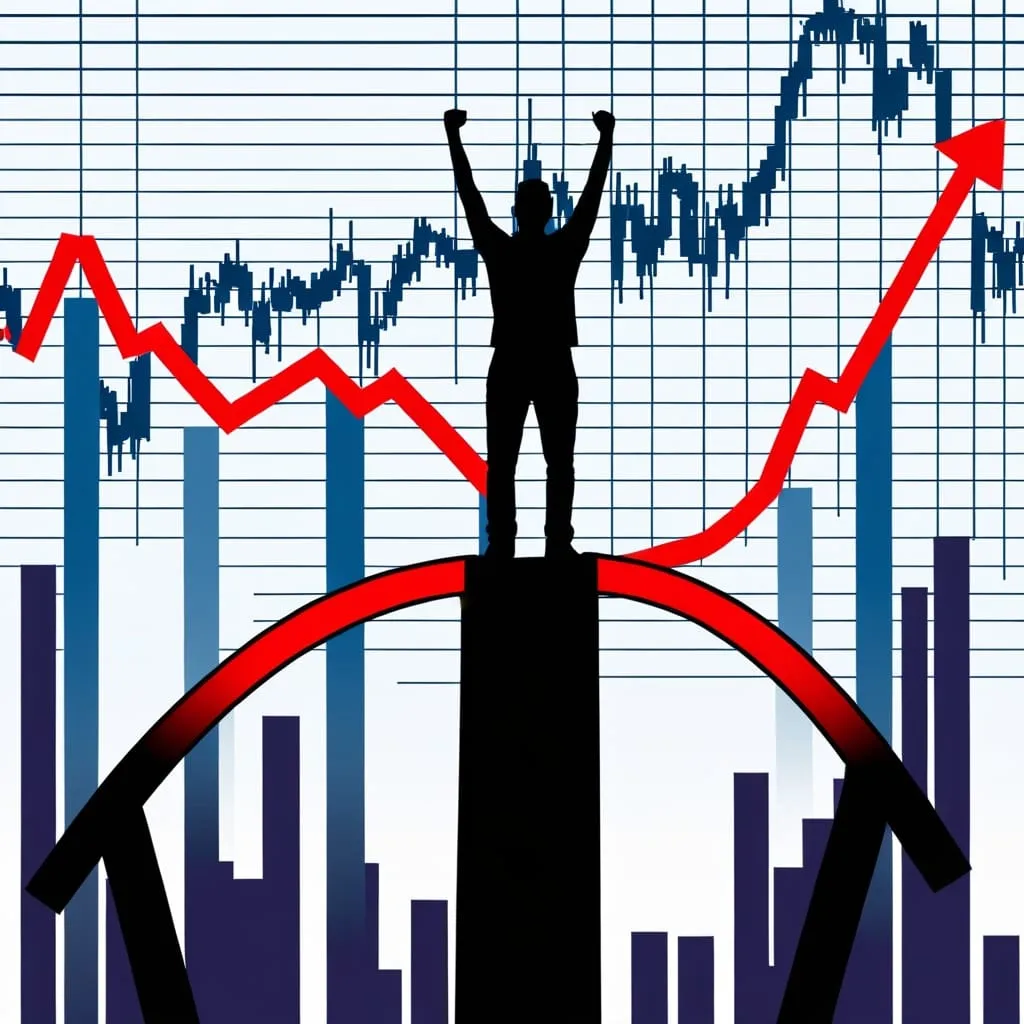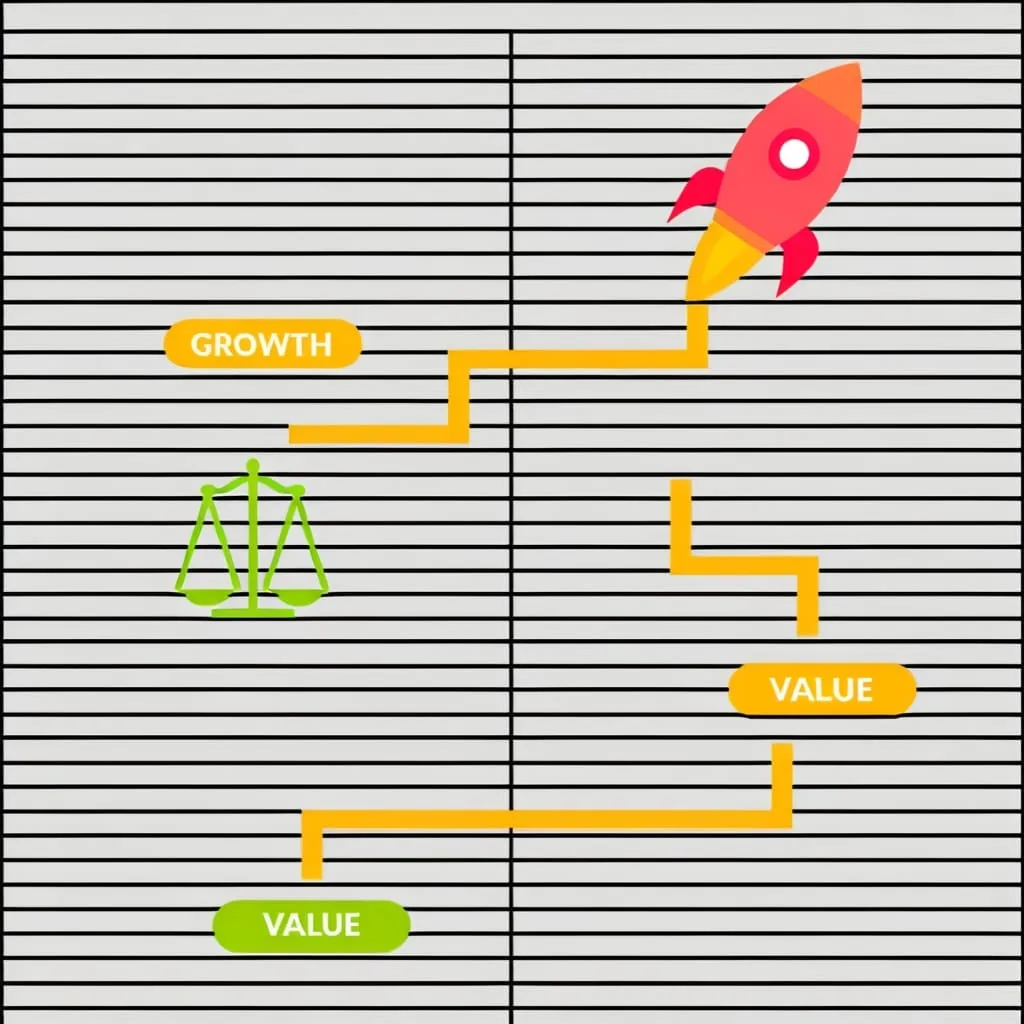Riding the Market Rollercoaster: How to Turn Volatility into Profit
Ever felt like the stock market's got you on a wild ride? One day you're up, the next you're down, and it feels like your stomach's doing somersaults. Well, buckle up, buttercup, because we're about to turn that rollercoaster into your personal money-making machine.
Let's get one thing straight: volatility isn't the boogeyman it's made out to be. It's more like that slightly crazy friend who always makes things interesting. Sure, they might give you a headache sometimes, but boy, do they know how to party.
So, what's the deal with volatility anyway? It's just a fancy way of saying that stock prices are bouncing around like a kid on a sugar high. But here's the kicker – it's not the same as risk. Nope, risk is about potentially losing your shirt. Volatility? It's just the market's mood swings.
Think about it this way: when the market's having a meltdown, it's like a clearance sale at your favorite store. Suddenly, those premium brands you've been eyeing are going for bargain-basement prices. And who doesn't love a good deal?
Now, I know what you're thinking. "But isn't volatility scary?" Sure, if you're not prepared. But we're not here to run away screaming. We're here to make some serious dough.
First things first, let's talk about regular investing. It's like going to the gym – consistency is key. When you invest regularly, regardless of what the market's doing, you're basically playing a game of averages. Sometimes you'll buy high, sometimes you'll buy low, but over time, it all evens out. And the best part? When the market's having a fire sale, you get to scoop up more shares for your buck.
Now, let's chat about diversification. It's the investing world's version of not putting all your eggs in one basket. Spread your money around different types of investments, and you'll be less likely to get caught with your pants down when one sector takes a nosedive.
But here's the real secret sauce – focusing on fundamentals. When the market's going crazy, it's easy to get swept up in the panic. But if you've done your homework and invested in solid companies, those price swings are just noise. It's like watching a soap opera – lots of drama, but at the end of the day, not much has really changed.
For those of you who like a bit more action, volatility can be a goldmine for trading opportunities. It's like surfing – you've got to catch the right wave at the right time. Some traders like to ride the market trends, jumping on stocks that are moving with the overall market sentiment. Others prefer quick in-and-out trades, taking profits before the tide turns.
But remember, with great power comes great responsibility. (Yeah, I just quoted Spider-Man. Deal with it.) If you're going to play in the volatile sandbox, you need to have a solid plan. Set some ground rules for yourself – when to buy, when to sell, and most importantly, when to walk away. It's like setting a budget for a night out – it helps keep you from doing something you'll regret in the morning.
For the real adrenaline junkies out there, there's always options trading. It's like betting on the market's mood swings. You can make money whether stocks go up, down, or sideways. But fair warning – it's not for the faint of heart. It's more like skydiving than a leisurely stroll in the park.
And let's not forget about our friend, the VIX. No, it's not a cough syrup – it's the Volatility Index. Think of it as the market's fear gauge. When it's high, people are freaking out. When it's low, everyone's chilling. And guess what? You can trade on that too.
Now, I know all this might sound a bit overwhelming. But here's the thing – volatility has been around since the first caveman traded a shiny rock for a bigger club. It's not going anywhere. And historically, the market has always bounced back. Always. It's like that inflatable clown punching bag – no matter how hard you hit it, it pops right back up.
So, next time you see the market going bonkers, don't run for the hills. Grab your surfboard and ride that wave. Because in the world of investing, volatility isn't just the price of admission – it's the main attraction.
Remember, every market downturn is just a sale on stocks. Every upswing is a chance to take some profits. And every wild swing in between? That's just the market giving you a chance to prove how cool you are under pressure.
So, are you ready to turn that market rollercoaster into your personal ATM? Strap in, keep your hands inside the ride at all times, and get ready for the thrill of a lifetime. Because when it comes to investing, the real fun begins when things get a little crazy.
Just remember – this isn't about getting rich quick. It's about building wealth over time. It's about being smart, staying calm, and seeing opportunities where others see chaos. It's about understanding that in the world of investing, slow and steady doesn't just win the race – it often laps the competition.
Think about it like this: every time the market takes a dive, it's like it's winding up a giant rubber band. And what happens when you let go of a wound-up rubber band? It snaps back, often harder than you expect. That's the market recovery, and if you're positioned right, it can catapult your portfolio to new heights.
But here's the real kicker – you don't have to be a Wall Street hotshot to make this work for you. You don't need a fancy degree or a suit that costs more than your car. All you need is a plan, some patience, and the guts to stick to your guns when everyone else is losing their heads.
Start small if you need to. Maybe it's just putting a little bit away each month into a low-cost index fund. Maybe it's learning about a few solid companies and buying a share or two when the price looks good. The point is to get in the game, to start building that muscle memory of investing through the ups and downs.
And here's a pro tip: pay attention to the news, but don't let it rule your decisions. The media loves drama, and they'll make every market hiccup sound like the end of the world. But remember, they're in the business of selling headlines, not giving investment advice.
Instead, focus on the long game. Think about where you want to be in 5, 10, or 20 years. That's your North Star. Let it guide your decisions, not the day-to-day market noise.
And hey, if all else fails, just remember this: in the history of the stock market, the optimists have always won out in the end. Why? Because progress is relentless. Innovation keeps happening. And great companies find a way to adapt and thrive, no matter what the world throws at them.
So, the next time you feel that market rollercoaster taking a steep dive, don't close your eyes and scream. Throw your hands up in the air and enjoy the ride. Because with the right mindset and strategy, that plunge could be your express ticket to profit town.
In the end, mastering market volatility isn't about having a crystal ball or some secret formula. It's about having the right attitude, the right knowledge, and the courage to act when others are paralyzed by fear or greed. It's about seeing the big picture when everyone else is focused on the pixels.
So, are you ready to turn market volatility from your nemesis into your best friend? Are you ready to see opportunity where others see only risk? Are you ready to ride this rollercoaster all the way to the bank?
Because here's the truth: the market will always be volatile. It will always have its ups and downs. But with the right approach, you can make those swings work for you, not against you. You can turn that volatility into your own personal profit machine.
So buckle up, keep your eyes on the horizon, and get ready for the ride of your life. Because in the world of investing, the biggest thrills – and the biggest rewards – come to those who know how to dance with volatility, not run from it.






